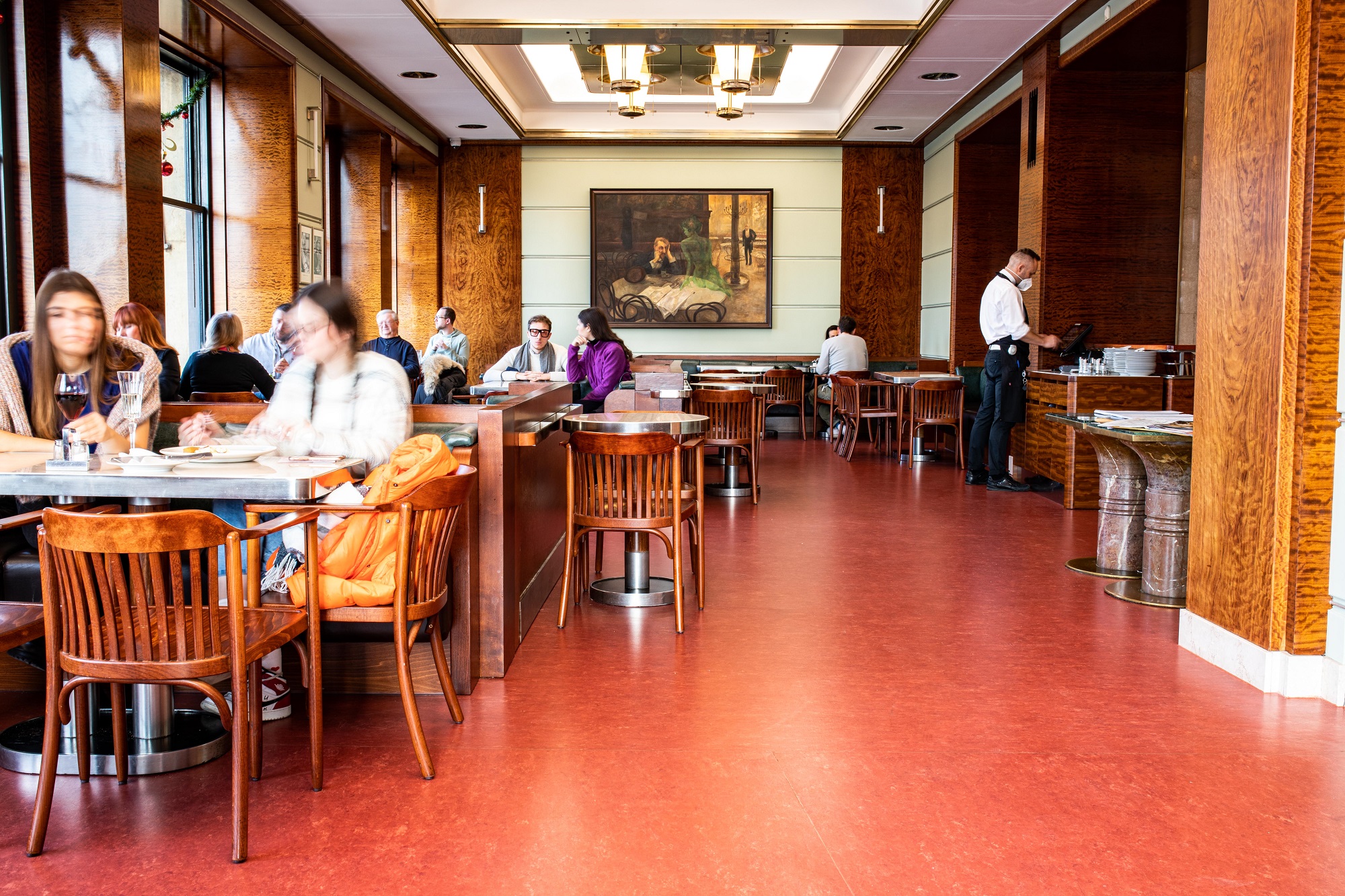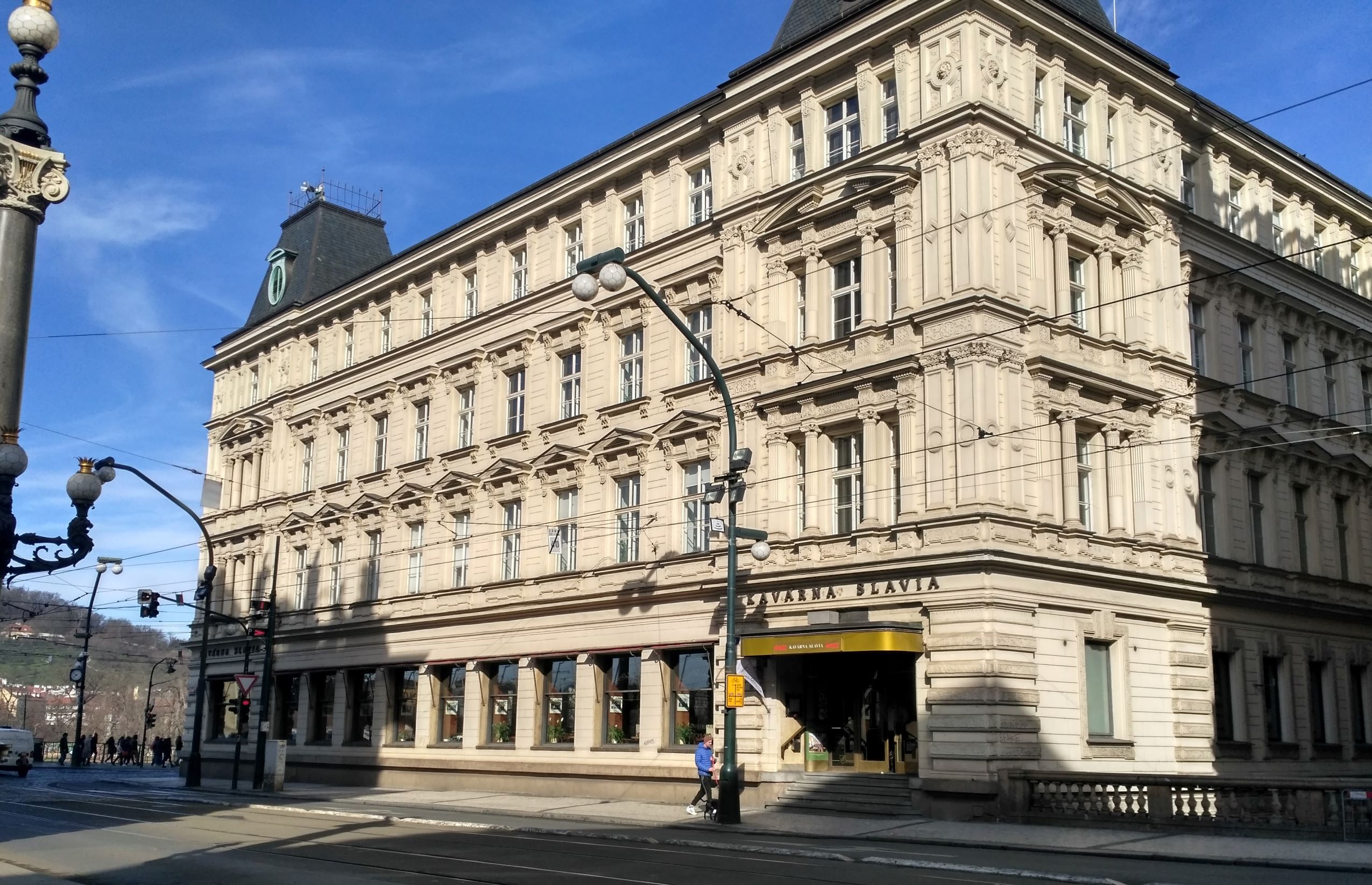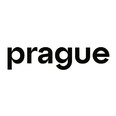Breadcrumbs navigation
Café Slavia

The construction of Lažanský Palace was completed on the corner of today’s Národní Avenue and Smetana Embankment 160 years ago. The ground floor is home to Prague’s iconic Café Slavia, whose guests have included the cream of world culture, such as Kafka and Rilke.
Published on March 10, 2023
Following the recent renovation of its interior, perhaps Prague’s most famous and most popular café is now open to the public again. Decorated in the Art Deco style, its iconic marble and wood walls and chunky round tables are instantly recognisable to anyone from Prague. It boasts a beautiful view of Prague Castle that you won’t see from any other windows. It quickly became a favourite haunt of artists and intellectuals, and was frequented by the likes of Franz Kafka, Rainer Maria Rilke, Toyen, Nobel Prize winner Jaroslav Seifert, and the world-famous composers Bedřich Smetana and Antonín Dvořák.
After Czechoslovakia was invaded by Warsaw Pact troops in 1968 and subsequently occupied by the Soviets, figures at the helm of non-conformist culture and political dissent, notably the future president Václav Havel, would congregate here.
In Slavia, you can lose yourself in reverie in front of Viktor Oliva’s legendary painting The Absinthe Drinker, which no one calls anything but the Green Fairy. The green bohemian muse of Prague.
Indeed, absinthe culture is very much embedded in Café Slavia’s ambience even today. Sample, for example, the establishment’s Death Before Noon, a cocktail prepared with absinthe liqueur, prosecco and citrus powder. This is a specifically Bohemian twist on the American cocktail Death in the Afternoon, created by none other than Ernest Hemingway, who named it after one of his books.
Café Slavia itself has also become the inspiration for numerous works of art. A very special place among them is reserved for a poem by Jaroslav Seifert, the only Czech to win the Nobel Prize for literature, who was a regular here, with which we end our reminiscence on this charming setting.
Café Slavie
Jaroslav Seifert
Though the secret door from the riverbank,
which was made of such clear glass,
that it is nearly invisible
and whose curtain
are smeared with rose oil
sometimes Guillaume Apollinaire came.
He still had his head bandaged from the war.
he sat down with us
and read brutally beautifull poems,
which Karel Teige translated immediately.
To the poet's honor
we drang absinthe.
It is greener
than all that is green
and when we looked up from the table out of the windows,
beneath the riverbank, the Seine was flowing.
Oh yes, the Seine.
Because at a distance, widely straddled
the Eiffel tower stood.
Once Nezval run in wearing a black bowler.
At the time, we did not have any idea,
not even he knew,
that Apollinaire wore such a hat,
when he fell in love
with the beautiful Louise de Coligny-Châtillou,
whom he used to call Lou.
Translation by Lenka Zelená

 Prague City Tourism
Prague City Tourism
Prague City Tourism (PCT) is a joint stock company 100% owned by the Capital City of Prague and is the certified official organization for Prague City Hall destination management. Its main mission is to promote sustainable domestic and inbound international tourism in the capital.
